#based architecture encourages developers
Explore tagged Tumblr posts
Text
PureCode company | React Learning Curve
React’s learning curve is moderate compared to Angular. React’s component-based architecture encourages developers to start with simple components and gradually progress to more advanced topics. JSX, while initially challenging to learn, uses a familiar HTML-like syntax that can ease the transition for newcomers.
#React Learning Curve#purecode software reviews#purecode ai company reviews#purecode company#purecode reviews#purecode ai reviews#purecode#html tags#based architecture encourages developers#HTML-like syntax
2 notes
·
View notes
Text
StreamBuilder: our open-source framework for powering your dashboard.
Today, we’re abnormally jazzed to announce that we’re open-sourcing the custom framework we built to power your dashboard on Tumblr. We call it StreamBuilder, and we’ve been using it for many years.
First things first. What is open-sourcing? Open sourcing is a decentralized software development model that encourages open collaboration. In more accessible language, it is any program whose source code is made available for use or modification as users or other developers see fit.
What, then, is StreamBuilder? Well, every time you hit your Following feed, or For You, or search results, a blog’s posts, a list of tagged posts, or even check out blog recommendations, you’re using this framework under the hood. If you want to dive into the code, check it out here on GitHub!
StreamBuilder has a lot going on. The primary architecture centers around “streams” of content: whether posts from a blog, a list of blogs you’re following, posts using a specific tag, or posts relating to a search. These are separate kinds of streams, which can be mixed together, filtered based on certain criteria, ranked for relevancy or engagement likelihood, and more.
On your Tumblr dashboard today you can see how there are posts from blogs you follow, mixed with posts from tags you follow, mixed with blog recommendations. Each of those is a separate stream, with its own logic, but sharing this same framework. We inject those recommendations at certain intervals, filter posts based on who you’re blocking, and rank the posts for relevancy if you have “Best stuff first” enabled. Those are all examples of the functionality StreamBuilder affords for us.
So, what’s included in the box?
The full framework library of code that we use today, on Tumblr, to power almost every feed of content you see on the platform.
A YAML syntax for composing streams of content, and how to filter, inject, and rank them.
Abstractions for programmatically composing, filtering, ranking, injecting, and debugging streams.
Abstractions for composing streams together—such as with carousels, for streams-within-streams.
An abstraction for cursor-based pagination for complex stream templates.
Unit tests covering the public interface for the library and most of the underlying code.
What’s still to come
Documentation. We have a lot to migrate from our own internal tools and put in here!
More example stream templates and example implementations of different common streams.
If you have questions, please check out the code and file an issue there.
5K notes
·
View notes
Photo

A Brief History of Egyptian Art
Art is an essential aspect of any civilization. Once the basic human needs have been taken care of such as food, shelter, some form of community law, and a religious belief, cultures begin producing artwork, and often all of these developments occur more or less simultaneously. This process began in the Predynastic Period in Egypt (c. 6000 - c. 3150 BCE) through images of animals, human beings, and supernatural figures inscribed on rock walls. These early images were crude in comparison to later developments but still express an important value of Egyptian cultural consciousness: balance.
Egyptian society was based on the concept of harmony known as ma'at which had come into being at the dawn of creation and sustained the universe. All Egyptian art is based on perfect balance because it reflects the ideal world of the gods. The same way these gods provided all good gifts for humanity, so the artwork was imagined and created to provide a use. Egyptian art was always first and foremost functional. No matter how beautifully a statue may have been crafted, its purpose was to serve as a home for a spirit or a god. An amulet would have been designed to be attractive but aesthetic beauty was not the driving force in its creation, protection was. Tomb paintings, temple tableaus, home and palace gardens all were created so that their form suited an important function and, in many cases, this function was a reminder of the eternal nature of life and the value of personal and communal stability.
Early Dynastic Period Art
The value of balance, expressed as symmetry, infused Egyptian art from the earliest times. The rock art from the Predynastic Period establishes this value which is fully developed and realized in the Early Dynastic Period of Egypt (c. 3150 - c. 2613 BCE). Art from this period reaches its height in the work known as The Narmer Palette (c. 3200-3000 BCE) which was created to celebrate the unity of Upper and Lower Egypt under King Narmer (c. 3150 BCE). Through a series of engravings on a siltstone slab, shaped as a chevron shield, the story is told of the great king's victory over his enemies and how the gods encouraged and approved his actions. Although some of the images of the palette are difficult to interpret, the story of unification and the celebration of the king is quite clear.
On the front, Narmer is associated with the divine strength of the bull (possibly the Apis Bull) and is seen wearing the crown of Upper and Lower Egypt in a triumphal procession. Below him, two men wrestle with entwined beasts which are often interpreted as representing Upper and Lower Egypt (though this view is contested and there seems no justification for it). The reverse side shows the king's victory over his enemies while the gods look on approvingly. All these scenes are carved in low-raised relief with incredible skill.
This technique would be used quite effectively toward the end of the Early Dynastic Period by the architect Imhotep (c. 2667-2600 BCE) in designing the pyramid complex of King Djoser (c. 2670 BCE). Images of lotus flowers, papyrus plants, and the djed symbol are intricately worked into the architecture of the buildings in both high and low relief. By this time the sculptors had also mastered the art of working in stone to created three-dimensional life-sized statues. The statue of Djoser is among the greatest works of art from this period.
Continue reading...
121 notes
·
View notes
Note
what spells would you recommend for trying to grow a discord server?
Feed the server and make it fat and happy. It will begin to expand on its own, like an eldritch monster unfurling its tentacles.
To feed a Discord server so it grows fat and happy and expands like an eldritch monster:
I have for you two methods. The first is feeding an effigy, and the second is direct energy work.
Create an effigy of your Discord server, and feed it physical offerings:
Create an effigy. Here are some ideas.
a dollie or a poppet, your idealization of what creature the server might look like if it were a guy, marked with the server ID as a taglock
a sachet or container filled with server taglocks (name, ID, date of birth, printed "About Server" content, etc)
a sigil based on the name and purpose of the server
Create and awaken the effigy in your usual manner. Then, keep it in a nice location and often feed it physical offerings. This may include food, beverages, luxury gifts like liquor and tobacco, candles, and incense.
Feed it as often as you like, even daily. When you feed it, make it clear that it should be going out to find new members and bring them in. Encourage it to soothe potential members so they are willing to go through any membership validation processes, and any other instructions you think are helpful.
Directly energize the server:
In a trance state, seek out the energetic core of the discord server and directly feed it energy. This is not the same thing as energizing the physical device which you are using to view the server.
Try using an energy working technique similar to "grounding roots," except instead of growing roots into the earth, you are growing tendrils into the internet.
It can help to focus on an admin-only sigil channel (described below), and you can also energetically feed an effigy (described above).

A candle spell may work well for a temporary boost to membership.
A candle spell to get people to join your Discord server:
Energize a candle of any color. Here are ideas of energies to capitalize on:
Mercurial, mercury
Drawing in, creating
Visualizations of members joining
Air
On or around the candle holder, in whatever fire-safe manner you prefer, encircle the candle in honey or sugar (to sweeten; make pleasant), and include allspice berries or ground allspice (chatter, movement, exchange).
Enchant and seal the candle in your preferred method.
The candle flame may provide a helpful omen.

Before modern architecture where frames supported a building, buildings used to rest on the weight of their walls. This necessitated hugely fortified walls to support the structure.
Likewise, a server that grows too rapidly may not have the necessary framework available to support it, and collapse under its own weight.
Be preemptive and build large walls around your server, to provide necessary support while inner frameworks are developed and expanded.
To work a protection on a server, a blog, or any online space:
Prepare a jar spell using:
an opaque black stone (obsidian, jet, and tourmaline work well for you rock collectors; also, river rocks and landscaping rocks painted black; lava rocks, or found stones very dark in color), [an impregnable wall]
a tangle of knotted thread (any color), [to 'trip up' unwanted things]
an iron nail [a knight with sword and shield standing guard]
To this, add two things:
a paper with the server ID number (or, URL of the web group)
a sigil for the purpose of protection
Enchant the jar in your usual manner. Then:
in an admin-only hidden channel of the server, include a photograph of the spell jar and upload a photograph of the sigil for the purpose of protection.
This entire operation is elevated if the ward is tied to a ruleset members must agree to on joining.
31 notes
·
View notes
Text
Let's talk Apples, Bauhaus, Ads & Kazui Mukuhara's MVs!
I've seen a lot of people talk about art history when it comes to both of Kazui's MVs, but usually, the analysis tends to focus on more surface-level aspects. I'm a bit of an art history nerd, so I thought - hey, why not, let's look into it some more when it comes to these two videos! Particularly I am focusing on 20th century art.
Everyone and their mom has already deciphered the appearance of Magritte's The Son of Man in half (Cat confirms the similarity by making a direct reference to the painting), but I'm gonna be quickly repeating it anyways without simply going off the Wikipedia summary.


The Son of Man is, like many of Magritte's works, about not giving the viewer all the details to understand the work. His photorealistic style contrasts with his phantastical subjects to create a dream-like atmosphere and to invite the viewer to step into this dream world of surrealism he's crafted. "half" borrows the surface theme of not being able to see everything about the man who is depicted, his face being obscured, almost as though he is wearing a mask.
But that's not all! The apple from this painting has been borrowed to be a symbol in Kazui's story as a whole.
The apple as a symbol of sin, desire and the downfall of man has been used in essentially all mediums of art since... the invention of abrahamic religions and the writing of the story of the garden of Eden? The Tanach/Old Testament (and, of course, the New Testament) and tales within it have inspired a lot of art symbolism (e.g. crosses, apples...) so it's not a surprise this pops up in modern anime music videos. Hell, the apple was even used as shorthand in Snow White. If you'd like to look more into apple symbolism and its origins, I'd suggest looking into this article. Especially interesting for us and theory-crafters, of course, is the 'desire' aspect of the apple symbolism.
So, "half" and "Cat" reference The Son of Man. But one connection to a painting isn't enough to warrant a theme of art history, is it? You're right! Let's talk about "Cat"'s visual style!

Many people have already pointed out Cat's print, advertisement-like style with its CMYK color scheme and torn paper at the edges. But it seems a lot of people in the fandom don't really know what this style in particular is called. The combination of these geometric shapes with print colors, slick design and the Helvetica font has its roots in Bauhaus design — it's based on the modern idea of the "Bauhaus" style.

Students of the Bauhaus school were mainly involved in designing furniture, architecture, and print design. Bauhaus' design philosophy was 'form follows function' — Walter Gropius' (the founder of Bauhaus) goal with his school was to streamline design as a whole and make mass production of designs possible. This led to a rather strict design process - students were encouraged to follow the school's motto and not add 'unnecessary' elements to their designs. This is why, more than 100 years later, designs developed in the Bauhaus school are still being used for print media and furniture.
Why is this important? What I want you to focus on in that aspect of "Cat"'s design is the inherent strictness that came with this philosophy of design. Bauhaus designs followed purpose rather than simply existing for art's sake (even originally being created with more political ideas, that being socialism, in mind).
In contrast to this, let's focus on what Bauhaus' groundwork design was used for in the late 20th century.
You might recognize the advertisement style presentation from more recent Pop Art works such as Roy Lichtenstein's big canvas works or, more famously, some of Andy Warhol's print works, which were also made by utilizing similar techniques in color and print. Particularly, you might have also drawn connections to Andy Warhol's Marylin Monroe prints.

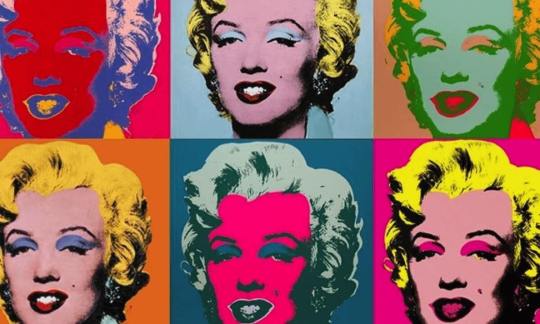
Pop Art is (in)famously one of the most modern-culture-heavy art periods. Pop Art is all about consumerism and ads. And, in turn, consumerism and ads are about society, which is about upholding norms, which is Sometimes Also about gender and masculinity. So, we close this weird circle and we're all the way back to that suffocating masculinity theme.
The only thing in Cat that breaks away from the print ad influence is the ending section, where the background is a harsh red. That's on purpose. It's not really supposed to be part of the Pop Art world everyone that isn't Kazui seems to be living in.

I personally believe the progression from half's theater, Magritte-based symbolism to Cat's loud and modern Bauhaus/Pop Art style to be purposeful. Half gives you the story of a sad man trapped in a tragedy, Cat gives you the story of a liar who tries to embrace the societal standards that are suffocating him. While Magritte's work leads you into a world of dreams, Pop Art makes you face reality in the most obnoxious and colorful way possible.
And, really, isn't that just what Kazui is all about? Dreaming? Closing his eyes to escape the print ad reality he lives in? Waking up to see something he has never faced before, dark red, color splotches that don't fit into this ideal CMYK world, splattered on the sidewalk below?
#forgive me this is a bit all over the place... i started this months ago and then just had it sitting around#prisoner's ramblings#milgram#007#meta
36 notes
·
View notes
Text
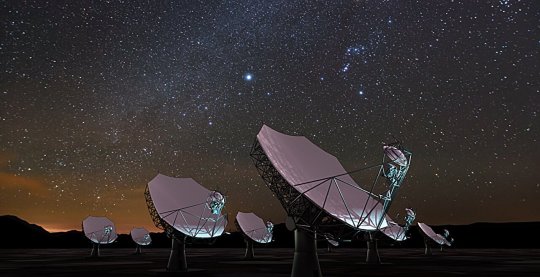
New data model paves way for seamless collaboration among US and international astronomy institutions
Software engineers have been hard at work to establish a common language for a global conversation. The topic—revealing the mysteries of the universe. The U.S. National Science Foundation National Radio Astronomy Observatory (NSF NRAO) has been collaborating with U.S. and international astronomy institutions to establish a new open-source, standardized format for processing radio astronomical data, enabling interoperability between scientific institutions worldwide.
When telescopes are observing the universe, they collect vast amounts of data—for hours, months, even years at a time, depending on what they are studying. Combining data from different telescopes is especially useful to astronomers, to see different parts of the sky, or to observe the targets they are studying in more detail, or at different wavelengths. Each instrument has its own strengths, based on its location and capabilities.
"By setting this international standard, NRAO is taking a leadership role in ensuring that our global partners can efficiently utilize and share astronomical data," said Jan-Willem Steeb, the technical lead of the new data processing program at the NSF NRAO. "This foundational work is crucial as we prepare for the immense data volumes anticipated from projects like the Wideband Sensitivity Upgrade to the Atacama Large Millimeter/submillimeter Array and the Square Kilometer Array Observatory in Australia and South Africa."
By addressing these key aspects, the new data model establishes a foundation for seamless data sharing and processing across various radio telescope platforms, both current and future.
International astronomy institutions collaborating with the NSF NRAO on this process include the Square Kilometer Array Observatory (SKAO), the South African Radio Astronomy Observatory (SARAO), the European Southern Observatory (ESO), the National Astronomical Observatory of Japan (NAOJ), and Joint Institute for Very Long Baseline Interferometry European Research Infrastructure Consortium (JIVE).
The new data model was tested with example datasets from approximately 10 different instruments, including existing telescopes like the Australian Square Kilometer Array Pathfinder and simulated data from proposed future instruments like the NSF NRAO's Next Generation Very Large Array. This broader collaboration ensures the model meets diverse needs across the global astronomy community.
Extensive testing completed throughout this process ensures compatibility and functionality across a wide range of instruments. By addressing these aspects, the new data model establishes a more robust, flexible, and future-proof foundation for data sharing and processing in radio astronomy, significantly improving upon historical models.
"The new model is designed to address the limitations of aging models, in use for over 30 years, and created when computing capabilities were vastly different," adds Jeff Kern, who leads software development for the NSF NRAO.
"The new model updates the data architecture to align with current and future computing needs, and is built to handle the massive data volumes expected from next-generation instruments. It will be scalable, which ensures the model can cope with the exponential growth in data from future developments in radio telescopes."
As part of this initiative, the NSF NRAO plans to release additional materials, including guides for various instruments and example datasets from multiple international partners.
"The new data model is completely open-source and integrated into the Python ecosystem, making it easily accessible and usable by the broader scientific community," explains Steeb. "Our project promotes accessibility and ease of use, which we hope will encourage widespread adoption and ongoing development."
10 notes
·
View notes
Text
How to Balance PvE and PvP in MMORPGs
Creating a successful MMORPG requires careful attention to one of the most challenging aspects of MMORPG game development: balancing Player versus Environment (PvE) and Player versus Player (PvP) content. When these two gameplay pillars are properly balanced, they create a rich, dynamic world that keeps players engaged for years. When they're not, your game can quickly lose its player base.

Why Balance Matters in MMORPG Game Development
MMORPGs thrive on diverse player preferences. Some players love raiding dungeons and defeating epic bosses, while others crave the thrill of outmaneuvering human opponents. The most successful MMORPGs don't force players to choose—they create ecosystems where both playstyles can coexist and complement each other.
As experienced developers know, imbalance can lead to serious problems:
Player exodus when one type of content receives preferential treatment
"Dead" game areas when certain content lacks meaningful rewards
Community division between PvE and PvP players
Power imbalances that make content trivial or frustratingly difficult
Core Principles for Balancing PvE and PvP
1. Separate Skill Systems When Necessary
One fundamental approach in MMORPG game development is implementing different rules for skills in PvE versus PvP contexts. Many abilities that work well against predictable AI enemies can become overwhelming when used against other players.
Consider World of Warcraft's approach: many crowd control abilities have different durations when used against players compared to monsters. This simple adjustment prevents PvP matches from becoming frustrating stun-lock festivals while still allowing those abilities to remain useful in dungeons.
2. Create Meaningful Progression Paths for Both
Players need to feel their preferred gameplay style offers legitimate advancement. A common pitfall in MMORPG game development is making the best gear exclusive to one content type.
Guild Wars 2 solves this elegantly by offering multiple paths to equivalent gear. Whether you're exploring story content, raiding, or competing in structured PvP, you're making meaningful progress toward your character's growth.
3. Design Complementary Reward Structures
Smart reward structures encourage players to engage with both content types without forcing them into gameplay they don't enjoy.
Final Fantasy XIV implements this brilliantly:
PvP offers unique cosmetic rewards and titles that don't affect PvE power
PvE progression rewards that remain relevant to casual PvPers
Seasonal PvP rewards that maintain engagement without creating power imbalances
4. Consider Scaling Systems
Scaling systems are increasingly common in modern MMORPG game development, allowing characters of different power levels to compete on more even terms.
Elder Scrolls Online's battle scaling system normalizes stats in PvP areas, ensuring that gear differences matter but don't make fights impossible. This approach lets newer players participate while still rewarding veterans' progression.
Technical Implementation Challenges
Skill Effect Modifiers
Implementing separate modifiers for skills across different content types creates additional complexity. Your system architecture needs to support contextual rule changes that can dynamically adjust how abilities function based on whether they're being used in PvE or PvP scenarios.
For example, a stun ability might last 5 seconds against a dungeon boss but only 2 seconds against another player. These contextual adjustments help maintain balance without creating separate ability sets.
Data-Driven Balance
Successful MMORPG game development requires continual refinement based on player behavior data. Implement robust telemetry systems to track:
Win rates in different PvP brackets
Completion times for PvE content
Class/build representation across content types
Economic impacts of different activities
This data forms the foundation for informed balance decisions rather than relying solely on player feedback, which often skews toward the most vocal community members.
Case Studies: Learning From Success and Failure
Guild Wars 2: Structured PvP Success
ArenaNet's approach to structured PvP in Guild Wars 2 represents one of the most elegant solutions in MMORPG game development. By completely separating PvP builds and gear from PvE progression, they created a truly skill-based PvP environment while allowing their PvE systems to scale naturally.
World of Warcraft: The PvP Power Experiment
Blizzard's introduction of PvP Power and PvP Resilience stats was an attempt to solve balance issues by creating separate gear progressions. While theoretically sound, this approach created problems:
Players needed separate gear sets for different content
PvE players felt forced into PvP to remain competitive
The system added complexity without solving core balance issues
The eventual removal of these stats and return to unified gear with contextual modifiers proves that simpler solutions are often better in MMORPG game development.
Integration Strategies That Work
Territorial Control With Benefits
Territorial PvP becomes more compelling when it offers benefits that extend to PvE gameplay. Black Desert Online uses this approach effectively, with guild warfare providing economic advantages that benefit both PvP-focused players and their more PvE-oriented guildmates.
Optional Flag Systems
Many successful MMORPGs implement flag systems allowing players to opt in or out of open-world PvP. This creates natural tension and excitement without forcing unwilling participants into combat situations they don't enjoy.
New World's territory control system exemplifies this approach, making PvP meaningful while keeping it optional for those who prefer PvE content.
Common Pitfalls to Avoid
In MMORPG game development, certain design decisions consistently lead to balance problems:
Making the best PvE gear require PvP participation (or vice versa)
Balancing classes primarily around one content type
Allowing gear advantages to completely overshadow skill in PvP
Creating "mandatory" grinds across content types
Neglecting one content type in major updates
Finding the Sweet Spot: Blending Content Types
The most successful MMORPGs find creative ways to blend PvE and PvP content:
ESO's Cyrodiil combines large-scale PvP with PvE objectives
FFXIV's Frontlines mixes competitive objectives with NPC enemies
Guild Wars 2's World vs. World incorporates PvE elements into massive realm warfare
These hybrid approaches satisfy both player types while encouraging interaction between different playstyles.
Conclusion
Successful MMORPG game development requires treating PvE and PvP balance as equally important, interconnected systems. By implementing contextual modifiers, separate progression paths, and data-driven balancing, you can create a game world where diverse player preferences are respected and rewarded.
Remember that perfect balance is never achieved—it's an ongoing process that requires constant attention and adjustment based on player behavior and feedback. The most successful MMORPGs view balance as a journey rather than a destination, with each update bringing the game closer to that elusive equilibrium that keeps all types of players engaged and satisfied.
By focusing on systems that allow both playstyles to thrive without undermining each other, you'll create an MMORPG that stands the test of time and builds a loyal, diverse community.
#game#mobile game development#multiplayer games#metaverse#nft#vr games#blockchain#gaming#unity game development
5 notes
·
View notes
Text
What are the Latest Trends in Building Construction in Dubai?

The construction industry in Dubai has long been a symbol of innovation, luxury, and futuristic design. With its rapid development and architectural marvels, the emirate has consistently set the bar for what is possible in the construction sector. Over the years, the building construction industry in Dubai has evolved significantly, and new trends continue to emerge, reshaping the landscape of urban development. From sustainability to technology integration, Dubai is at the forefront of the latest building construction trends. In this article, we will explore the key trends influencing the building construction sector in Dubai.
1. Sustainable and Green Building Practices
As the global emphasis on sustainability continues to grow, Dubai is also embracing green building practices. This trend is driven by the increasing need for energy-efficient buildings and eco-friendly solutions that minimize the environmental footprint of construction projects. Developers and building construction company in Dubai are now focusing on incorporating sustainable materials, energy-saving technologies, and eco-friendly designs in their projects.
One of the key features of sustainable buildings in Dubai is the use of solar panels. Solar energy is becoming a popular choice for powering buildings, helping to reduce energy consumption and carbon emissions. In addition to this, there is an increased use of recycled materials such as reclaimed wood, steel, and glass, which not only helps to preserve natural resources but also contributes to the reduction of construction waste.
Moreover, Dubai's commitment to sustainability is evident in the numerous green certifications, such as the Dubai Green Building Regulations, which encourage developers to integrate environmentally friendly technologies into their buildings. The use of smart building systems that optimize energy consumption and reduce water usage is also a growing trend. The shift towards green building practices is expected to continue as Dubai aims to reduce its carbon footprint and enhance the quality of life for its residents.
2. Smart and Connected Buildings
The concept of smart buildings has gained significant traction in Dubai over the past few years. With advancements in technology, there is a growing demand for buildings that are equipped with intelligent systems capable of enhancing comfort, convenience, and security. Smart buildings in Dubai are being designed with integrated technologies that allow for real-time monitoring and management of building systems such as lighting, HVAC (heating, ventilation, and air conditioning), security, and energy consumption.
The integration of Internet of Things (IoT) devices into building infrastructure is another trend that is revolutionizing the construction industry in Dubai. These devices can collect data on building performance, detect anomalies, and provide insights into how the building can be optimized for energy efficiency and occupant comfort. For instance, smart thermostats can automatically adjust the temperature based on occupancy, while intelligent lighting systems can dim or brighten according to the time of day or the presence of people.
Building automation systems (BAS) are becoming a crucial part of construction projects, allowing building managers to remotely control and monitor systems, reducing operational costs and improving efficiency. These smart technologies not only enhance the living and working experience but also provide a competitive edge for property developers and investors who are looking to attract tech-savvy tenants.
3. Modular and Prefabricated Construction
Modular and prefabricated construction is gaining popularity in Dubai as a way to speed up the construction process and reduce costs. Prefabricated construction involves assembling parts of a building off-site in a controlled environment before transporting and assembling them at the construction site. This method allows for greater precision and quality control, as the components are built in a factory setting rather than at the construction site.
One of the main benefits of modular and prefabricated construction is the significant reduction in construction time. In Dubai, where there is a constant demand for rapid development, this approach helps to meet deadlines and reduces the overall time required to complete projects. Additionally, it minimizes the disruption to the surrounding environment, as fewer materials are stored and handled on-site.
Another advantage of this construction method is the potential for cost savings. Since much of the work is completed off-site, labor costs are lower, and there is less waste generated. Furthermore, modular and prefabricated construction allows for the creation of more standardized and repeatable designs, which is ideal for large-scale developments such as residential communities or commercial buildings.
4. Use of Advanced Building Materials
Dubai’s construction industry is also witnessing a shift toward the use of advanced building materials that offer improved durability, sustainability, and aesthetic appeal. These materials include high-performance concrete, glass, and steel, as well as newer innovations such as self-healing concrete, transparent aluminum, and carbon fiber.
Self-healing concrete, for example, is a breakthrough material that has the ability to repair its cracks over time. This material can significantly extend the lifespan of buildings and reduce maintenance costs, making it an attractive option for developers in Dubai. Transparent aluminum, on the other hand, offers a unique combination of strength and transparency, making it an ideal material for modern facades and windows.
The use of carbon fiber in construction is also on the rise, particularly in the reinforcement of concrete structures. Carbon fiber is lightweight yet incredibly strong, making it an ideal material for improving the structural integrity of buildings without adding significant weight. As the demand for innovative, high-performance materials continues to grow, building construction companies in Dubai are exploring new ways to incorporate these materials into their projects.
5. Vertical Construction and Skyscrapers
As land space becomes increasingly limited in Dubai, vertical construction continues to be a key trend. Skyscrapers and high-rise buildings are a hallmark of Dubai’s skyline, and this trend is not slowing down. The demand for tall buildings in Dubai is driven by the need to accommodate a growing population and provide commercial and residential spaces in the limited available land area.
Dubai has already set several records in the construction of skyscrapers, including the iconic Burj Khalifa, the tallest building in the world. Vertical construction allows for the development of more compact, space-efficient buildings that maximize the use of available land. In addition, skyscrapers are designed to be multi-purpose, combining residential, commercial, and leisure spaces within the same structure.
In recent years, there has been a push towards even taller and more innovative designs. Architects and developers are constantly pushing the boundaries of what is possible in vertical construction, incorporating advanced technologies and engineering solutions to create more sustainable and energy-efficient high-rise buildings.
6. Luxury and High-End Residential Developments
Dubai has long been known for its luxury real estate market, and this trend shows no signs of slowing down. In recent years, there has been an increasing demand for high-end villas and residential properties that offer exceptional levels of comfort, style, and exclusivity. Developers are focusing on creating luxurious living spaces that cater to the needs and desires of affluent residents.
Villa construction companies in Abu Dhabi and Dubai are capitalizing on this demand by designing and building opulent villas with state-of-the-art amenities, such as private pools, gyms, and expansive gardens. These properties are often located in prime locations, such as beachfront areas or exclusive gated communities, providing residents with the ultimate in privacy and luxury.
The rise of luxury residential developments is also influencing the broader construction market in Dubai. Developers are incorporating cutting-edge designs, high-end finishes, and the latest technologies to ensure that their properties stand out in a competitive market. With a growing number of wealthy investors and residents, the demand for top-tier residential developments is expected to continue.
7. Focus on Mixed-Use Developments
Mixed-use developments are another major trend shaping the construction industry in Dubai. These projects combine residential, commercial, retail, and recreational spaces into a single, integrated development. The goal of mixed-use developments is to create self-sufficient communities where residents can live, work, and play without having to leave the development.
The rise of mixed-use developments in Dubai is driven by the need for more efficient land use and the desire to create vibrant, walkable communities. These developments often feature high-rise buildings, modern amenities, and extensive green spaces, providing a balanced lifestyle for residents and workers alike. Mixed-use developments also offer a sustainable solution to urban growth by reducing the need for long commutes and promoting a more connected, community-oriented way of life.
Conclusion
The construction industry in Dubai is undergoing significant transformations, with new trends and innovations reshaping the way buildings are designed and constructed. From sustainable building practices to the use of cutting-edge technologies, the emirate continues to set the standard for modern construction. As the demand for luxury, smart, and sustainable buildings continues to grow, building construction companies in Dubai will need to adapt and embrace these trends to stay competitive and meet the evolving needs of the market.
With the increasing popularity of modular and prefabricated construction, advanced materials, and vertical construction, Dubai’s skyline will continue to evolve, providing residents and visitors with an ever-changing and dynamic urban landscape. The future of construction in Dubai looks bright, and the trends we are witnessing today are only the beginning of what promises to be an exciting era for the industry.
#Building Contracting Company In Dubai#Building Construction Company In Dubai#General Contracting Company In Abu Dhabi#Best Construction Companies In Abu Dhabi#Contracting Companies In Al Ain#Construction Companies In Al Ain#Interior Design Fit Out Company Dubai#Interior Fit Out Contracting Company Dubai#Fit Out Contracting Company In Abu Dhabi#Villa Construction Companies In Abu Dhabi
2 notes
·
View notes
Text
Foreign Business Act
The Foreign Business Act (FBA) B.E. 2542 (1999) regulates and restricts foreign participation in certain business sectors in Thailand. The purpose of the FBA is to protect local businesses while encouraging foreign investment in targeted areas that benefit the country's economy. Foreign companies must understand the restrictions and licensing requirements outlined in this act to legally operate in Thailand.
1. Structure of the Foreign Business Act
The FBA classifies business activities into three categories (Annexes), each with varying degrees of restrictions:
1.1 Annex 1: Prohibited Activities
Reserved exclusively for Thai nationals, these activities are off-limits to foreigners due to their cultural, historical, or national importance. Foreigners cannot engage in these businesses under any circumstances.
Examples:
Newspaper and media businesses
Rice farming, livestock farming, and forestry
Trading and auctioning of Thai antiques
1.2 Annex 2: Restricted Activities (Subject to Cabinet Approval)
Foreigners can participate in these activities with special approval from the Thai Cabinet due to their potential impact on national security or public welfare.
Examples:
Production of firearms and military equipment
Domestic transportation
Mining and certain types of manufacturing
1.3 Annex 3: Restricted Activities (Requiring a Foreign Business License)
Foreigners may engage in these activities but must first obtain a Foreign Business License (FBL) from the Ministry of Commerce.
Examples:
Retail and wholesale trade
Hotels (excluding hotel management services)
Construction (with certain exceptions)
Legal, accounting, and architecture services
2. Definition of a Foreign Business
A business is considered foreign if it meets any of the following criteria:
It is registered outside Thailand.
More than 49% of its shares are owned by foreign nationals.
Companies with Thai majority ownership (51%) are considered Thai entities and are not subject to FBA restrictions.
3. Obtaining a Foreign Business License (FBL)
3.1 Application Process
Document Submission: Submit the necessary documents, including the business plan, company details, and financial projections, to the Department of Business Development (DBD).
Agency Review: The DBD will evaluate the application based on the business’s contribution to the economy, local employment, and technology transfer.
Approval or Rejection: The review process takes 60–90 days. Approval is granted if the business provides significant benefits to Thailand.
3.2 Criteria for Approval
Economic Contribution: Must provide clear benefits to Thailand's economy.
Local Employment: Businesses that create job opportunities for Thai citizens are favored.
Technology Transfer: Companies introducing new technology have a better chance of approval.
4. Exceptions and Special Cases
4.1 U.S.-Thailand Treaty of Amity
Under this treaty, U.S. citizens and companies can own up to 100% of businesses in most sectors, except those restricted under Annex 1 (e.g., land ownership, media).
4.2 Board of Investment (BOI) Promotion
BOI-promoted companies are exempt from certain FBA restrictions and enjoy tax incentives and easier approval processes.
4.3 Eastern Economic Corridor (EEC)
Businesses investing in high-tech industries within the Eastern Economic Corridor receive additional incentives and reduced restrictions.
5. Penalties for Non-Compliance
Operating a business without the required license can result in:
Fines up to 1 million THB
Imprisonment for up to 3 years
Business closure and forfeiture of profits
6. Recent Developments and Future Trends
Thailand continues to review its foreign business regulations to balance economic development and local business protection. There is growing discussion on liberalizing certain sectors such as technology, e-commerce, and renewable energy to attract foreign investment.
7. Conclusion
The Foreign Business Act is a cornerstone of Thailand’s business environment, regulating foreign participation in key sectors. While the FBA imposes restrictions, it also provides clear pathways for legal operation through licenses, BOI promotion, and bilateral agreements. Foreign investors must conduct thorough research, engage local legal experts, and comply with the FBA’s requirements to operate successfully in Thailand.
#thailand#corporate#business#corporateinthailand#businessinthailand#thai#lawyers#corporatelawyers#businesslawyers#corporatelawyersinthailand#foreignbusinessact#fba
2 notes
·
View notes
Text
#TheeForestKingdom #TreePeople
{Terrestrial Kind}
Creating a Tree Citizenship Identification and Serial Number System (#TheeForestKingdom) is an ambitious and environmentally-conscious initiative. Here’s a structured proposal for its development:
Project Overview
The Tree Citizenship Identification system aims to assign every tree in California a unique identifier, track its health, and integrate it into a registry, recognizing trees as part of a terrestrial citizenry. This system will emphasize environmental stewardship, ecological research, and forest management.
Phases of Implementation
Preparation Phase
Objective: Lay the groundwork for tree registration and tracking.
Actions:
Partner with environmental organizations, tech companies, and forestry departments.
Secure access to satellite imaging and LiDAR mapping systems.
Design a digital database capable of handling millions of records.
Tree Identification System Development
Components:
Label and Identity Creation: Assign a unique ID to each tree based on location and attributes. Example: CA-Tree-XXXXXX (state-code, tree-type, unique number).
Attributes to Record:
Health: Regular updates using AI for disease detection.
Age: Approximate based on species and growth patterns.
Type: Species and subspecies classification.
Class: Size, ecological importance, and biodiversity contribution.
Rank: Priority based on cultural, historical, or environmental significance.
Data Collection
Technologies to Use:
Satellite Imaging: To locate and identify tree clusters.
LiDAR Scanning: For precise 3D modeling of forests.
On-the-Ground Surveys: To supplement remote sensing data.
AI Analysis: For rapid categorization and health diagnostics.
Registration and Citizenship Assignment
Tree Dossier: Each tree receives a profile in the database with all its recorded attributes.
Citizen Designation: Trees are acknowledged as citizens of Thee Forest Kingdom, emphasizing ecological respect.
Legal Framework: Advocate for laws to grant trees specific rights under environmental protection acts.
Maintenance and Monitoring
Health Monitoring: Use drones, satellite updates, and IoT sensors for ongoing health assessments.
Database Updates: Incorporate real-time data about environmental changes and tree growth.
Public Involvement
Encourage people to "adopt" trees and participate in their preservation.
Create educational programs to promote awareness of tree citizenship.
Key Benefits
Environmental Conservation: Improved forest management through real-time data and protection of ecosystems.
Cultural Recognition: Trees are recognized as a vital part of the Earth’s community, honoring their importance.
Ecological Advocacy: Strengthened legal protections for forests and individual trees.
Next Steps
Assemble a task force of environmental scientists, satellite imaging experts, and software developers.
Secure funding through governmental grants, non-profits, and eco-conscious corporations.
Pilot the program in a smaller region before scaling to all of California.
Would you like me to draft a more detailed technical or legal framework for this system?
The implementation of the Tree Citizenship Identification Network and System (#TheeForestKingdom) requires a robust technological and operational framework to ensure efficiency, accuracy, and sustainability. Below is an implementation plan divided into major components.
System Architecture
a. Centralized Tree Database
Purpose: To store and manage tree data including ID, attributes, location, and health.
Components:
Cloud-based storage for scalability.
Data categorization based on regions, species, and priority.
Integration with satellite and IoT data streams.
b. Satellite & Imaging Integration
Use satellite systems (e.g., NASA, ESA) for large-scale tree mapping.
Incorporate LiDAR and aerial drone data for detailed imaging.
AI/ML algorithms to process images and distinguish tree types.
c. IoT Sensor Network
Deploy sensors in forests to monitor:
Soil moisture and nutrient levels.
Air quality and temperature.
Tree health metrics like growth rate and disease markers.
d. Public Access Portal
Create a user-friendly website and mobile application for:
Viewing registered trees.
Citizen participation in tree adoption and reporting.
Data visualization (e.g., tree density, health status by region).
Core Technologies
a. Software and Tools
Geographic Information System (GIS): Software like ArcGIS for mapping and spatial analysis.
Database Management System (DBMS): SQL-based systems for structured data; NoSQL for unstructured data.
Artificial Intelligence (AI): Tools for image recognition, species classification, and health prediction.
Blockchain (Optional): To ensure transparency and immutability of tree citizen data.
b. Hardware
Servers: Cloud-based (AWS, Azure, or Google Cloud) for scalability.
Sensors: Low-power IoT devices for on-ground monitoring.
Drones: Equipped with cameras and sensors for aerial surveys.
Network Design
a. Data Flow
Input Sources:
Satellite and aerial imagery.
IoT sensors deployed in forests.
Citizen-reported data via mobile app.
Data Processing:
Use AI to analyze images and sensor inputs.
Automate ID assignment and attribute categorization.
Data Output:
Visualized maps and health reports on the public portal.
Alerts for areas with declining tree health.
b. Communication Network
Fiber-optic backbone: For high-speed data transmission between regions.
Cellular Networks: To connect IoT sensors in remote areas.
Satellite Communication: For remote regions without cellular coverage.
Implementation Plan
a. Phase 1: Pilot Program
Choose a smaller, biodiverse region in California (e.g., Redwood National Park).
Test satellite and drone mapping combined with IoT sensors.
Develop the prototype of the centralized database and public portal.
b. Phase 2: Statewide Rollout
Expand mapping and registration to all California regions.
Deploy IoT sensors in vulnerable or high-priority areas.
Scale up database capacity and integrate additional satellite providers.
c. Phase 3: Maintenance & Updates
Establish a monitoring team to oversee system health and data quality.
Update the network with new technologies (e.g., advanced AI models).
Periodically review and revise data collection protocols.
Partnerships
Government Agencies: U.S. Forest Service, California Department of Forestry and Fire Protection.
Tech Companies: Collaborate with Google Earth, Amazon AWS, or Microsoft for cloud and AI capabilities.
Environmental Organizations: Partner with WWF, Sierra Club, or TreePeople for funding and advocacy.
Budget Estimation
Initial Investment:
Satellite data and licenses: $10M
IoT sensors and deployment: $5M
Database and app development: $3M
Operational Costs:
Cloud services and data storage: $2M/year
Maintenance and monitoring: $1M/year
Research and development: $1M/year
Long-term Vision
Expand the system to other states or globally.
Use the database for reforestation efforts and combating deforestation.
Develop educational programs to teach communities about the importance of trees as citizens.
Would you like me to assist in designing the user interface for the public portal or drafting partnership proposals for funding?
To begin building the program for the Tree Citizenship Identification System, we’ll start with a scalable framework that allows us to process, store, and analyze data while preparing for future expansions. Here's an actionable development plan with an initial focus on foundational code and infrastructure:
Step-by-Step Development
Phase 1: Setting Up the Backend Infrastructure
Objective: Create the core database and develop the data pipeline for processing tree data.
Technologies:
Programming Languages: Python, JavaScript (Node.js), SQL.
Frameworks: Flask or FastAPI for APIs, Django for web application backend.
Database: PostgreSQL for structured data, MongoDB for unstructured data.
Code Snippet 1: Database Schema Design (PostgreSQL)
-- Table for Tree Registry CREATE TABLE trees ( tree_id SERIAL PRIMARY KEY, -- Unique Identifier location GEOGRAPHY(POINT, 4326), -- Geolocation of the tree species VARCHAR(100), -- Species name age INTEGER, -- Approximate age in years health_status VARCHAR(50), -- e.g., Healthy, Diseased height FLOAT, -- Tree height in meters canopy_width FLOAT, -- Canopy width in meters citizen_rank VARCHAR(50), -- Class or rank of the tree last_updated TIMESTAMP DEFAULT NOW() -- Timestamp for last update );
-- Table for Sensor Data (IoT Integration) CREATE TABLE tree_sensors ( sensor_id SERIAL PRIMARY KEY, -- Unique Identifier for sensor tree_id INT REFERENCES trees(tree_id), -- Linked to tree soil_moisture FLOAT, -- Soil moisture level air_quality FLOAT, -- Air quality index temperature FLOAT, -- Surrounding temperature last_updated TIMESTAMP DEFAULT NOW() -- Timestamp for last reading );
Code Snippet 2: Backend API for Tree Registration (Python with Flask)
from flask import Flask, request, jsonify from sqlalchemy import create_engine from sqlalchemy.orm import sessionmaker
app = Flask(name)
Database Configuration
DATABASE_URL = "postgresql://username:password@localhost/tree_registry" engine = create_engine(DATABASE_URL) Session = sessionmaker(bind=engine) session = Session()
@app.route('/register_tree', methods=['POST']) def register_tree(): data = request.json new_tree = { "species": data['species'], "location": f"POINT({data['longitude']} {data['latitude']})", "age": data['age'], "health_status": data['health_status'], "height": data['height'], "canopy_width": data['canopy_width'], "citizen_rank": data['citizen_rank'] } session.execute(""" INSERT INTO trees (species, location, age, health_status, height, canopy_width, citizen_rank) VALUES (:species, ST_GeomFromText(:location, 4326), :age, :health_status, :height, :canopy_width, :citizen_rank) """, new_tree) session.commit() return jsonify({"message": "Tree registered successfully!"}), 201
if name == 'main': app.run(debug=True)
Phase 2: Satellite Data Integration
Objective: Use satellite and LiDAR data to identify and register trees automatically.
Tools:
Google Earth Engine for large-scale mapping.
Sentinel-2 or Landsat satellite data for high-resolution imagery.
Example Workflow:
Process satellite data using Google Earth Engine.
Identify tree clusters using image segmentation.
Generate geolocations and pass data into the backend.
Phase 3: IoT Sensor Integration
Deploy IoT devices to monitor health metrics of specific high-priority trees.
Use MQTT protocol for real-time data transmission.
Code Snippet: Sensor Data Processing (Node.js)
const mqtt = require('mqtt'); const client = mqtt.connect('mqtt://broker.hivemq.com');
client.on('connect', () => { console.log('Connected to MQTT Broker'); client.subscribe('tree/sensor_data'); });
client.on('message', (topic, message) => { const sensorData = JSON.parse(message.toString()); console.log(Received data: ${JSON.stringify(sensorData)}); // Save data to database (Example for PostgreSQL) saveToDatabase(sensorData); });
function saveToDatabase(data) { const query = INSERT INTO tree_sensors (tree_id, soil_moisture, air_quality, temperature) VALUES ($1, $2, $3, $4) ; const values = [data.tree_id, data.soil_moisture, data.air_quality, data.temperature]; dbClient.query(query, values, (err) => { if (err) console.error('Error saving to database', err); else console.log('Sensor data saved successfully!'); }); }
Phase 4: Public Portal Development
Frontend Technologies:
React.js or Vue.js for interactive user interfaces.
Mapbox or Leaflet.js for tree visualization on maps.
Features:
Interactive tree maps with search functionality.
User registration for tree adoption programs.
Deployment Plan
Use Docker to containerize the application.
Deploy on AWS, Azure, or Google Cloud for scalability.
Monitor system health using Prometheus and Grafana.
Next Steps
Develop a testing environment for pilot deployment.
Add AI-based disease detection and prediction using TensorFlow or PyTorch.
Create an adoption feature where citizens can adopt trees and track their health.
Would you like me to set up a GitHub repository with this initial framework or assist further with deployment?
I'll prepare the project framework and outline the repository structure for the Tree Citizenship Identification System. Below is the proposed structure for the repository, followed by details of the files and components.
Proposed Repository Structure
tree-citizenship-id-system/ ├── backend/ │ ├── app.py # Flask application for backend API │ ├── database/ │ │ ├── schema.sql # Database schema for PostgreSQL │ │ ├── db_config.py # Database connection configuration │ │ └── seed_data.sql # Initial sample data for testing │ ├── services/ │ │ ├── tree_registration.py # Functions for tree registration │ │ └── sensor_data.py # Functions for processing IoT sensor data │ └── requirements.txt # Python dependencies ├── frontend/ │ ├── public/ │ │ ├── index.html # Main HTML file │ │ └── favicon.ico # Favicon for the app │ ├── src/ │ │ ├── App.js # Main React/Vue app file │ │ ├── components/ │ │ │ ├── TreeMap.js # Map component for visualizing trees │ │ │ └── TreeDetails.js # Component for detailed tree view │ │ └── styles.css # Styling for the frontend │ └── package.json # Frontend dependencies ├── scripts/ │ ├── satellite_data_processor.py # Script for processing satellite data │ └── sensor_data_simulator.py # Mock data generator for IoT sensors ├── deployment/ │ ├── Dockerfile # Docker configuration │ ├── docker-compose.yml # Docker Compose for multi-service setup │ └── cloud_setup_instructions.md # Deployment guide for cloud platforms ├── tests/ │ ├── test_backend.py # Unit tests for backend API │ └── test_frontend.js # Unit tests for frontend ├── README.md # Overview of the project └── LICENSE # Project license
Repository Details
Backend:
app.py: Main Flask app for handling API requests like tree registration and sensor data.
database/schema.sql: SQL script for creating necessary tables.
services/: Directory for modular backend logic.
Frontend:
App.js: Main entry point for the frontend application.
TreeMap.js: Integrates Mapbox/Leaflet.js for displaying tree locations.
TreeDetails.js: Displays detailed information about a selected tree.
Scripts:
satellite_data_processor.py: Automates the extraction and classification of tree data from satellite imagery.
sensor_data_simulator.py: Generates fake sensor readings for development and testing.
Deployment:
Docker configuration ensures that the app runs consistently across environments.
Cloud setup instructions provide guidelines for deploying on platforms like AWS, Azure, or GCP.
Tests:
Unit tests ensure the reliability of both the backend and frontend.
Next Steps
I will initialize the repository structure locally.
Package the files and components needed for the first version.
Provide a link to the repository for access.
I’ll get started. Please hold on for a moment.
4 notes
·
View notes
Text
Why You Should Start Your Own Travel Agency and Travel Portal

Starting your own travel agency and travel portal in India presents a unique set of opportunities and advantages, given the country's vast and diverse tourism landscape. Here's why having the travel agency and travel portal is a great idea to embark on this entrepreneurial journey in India:
START YOUR OWN TRAVEL AGENCY & TRAVEL PORTAL.
1. Growing Tourism Industry in India
India's tourism industry is booming, with both domestic and international tourism on the rise. The country offers a rich tapestry of experiences, from heritage sites, cultural festivals, and wildlife safaris to spiritual journeys, adventure tourism, and wellness retreats. The Indian government has also been proactive in promoting tourism through initiatives like the Incredible India campaign and the development of infrastructure, making it an opportune time to start a travel business.
2. Diverse Market Segments
India's diverse geography and culture create a wide range of market segments to tap into. Whether its luxury travel, budget tourism, eco-tourism, medical tourism, or adventure sports, you can specialize in a niche that aligns with your passion and expertise. For instance, spiritual tourism, which includes visits to holy cities like Varanasi, Rishikesh, and Amritsar, is a particularly lucrative segment in India.
3. Growing Middle Class and Disposable Income
India's middle class is expanding rapidly, with increasing disposable income and a growing appetite for travel. More Indians are now willing to spend on vacations, both within the country and abroad. This rising demand for travel services opens up a significant market for travel entrepreneurs who can offer tailored experiences that cater to different budgets and preferences.
4. Technology and Digital Adoption
India has witnessed a surge in digital adoption, with more people using smartphones and the internet for various services, including travel bookings. The proliferation of online payment systems, travel apps, and e-commerce platforms has made it easier for businesses to reach customers. By creating a well-designed travel portal, you can tap into this digitally savvy audience, offering convenience and personalized services.
5. Opportunities in Domestic Tourism
The COVID-19 pandemic has shifted travel preferences, with a growing emphasis on domestic tourism. Indians are increasingly exploring their own country, discovering hidden gems in offbeat destinations. This trend offers a great opportunity to cater to domestic tourists, offering curated experiences, staycations, and weekend getaways that highlight India's lesser-known attractions.
6. Supportive Government Policies
The Indian government has been supportive of the tourism sector, offering various incentives and policies to encourage entrepreneurs. The introduction of e-Visas, the Swadesh Darshan Scheme for theme-based tourist circuits, and the development of tourism infrastructure are just a few examples of government initiatives aimed at boosting the industry. These policies can help you in establishing and growing your travel business.
7. Cultural and Heritage Tourism
India's rich cultural heritage is a major draw for tourists from around the world. The country is home to 40 UNESCO World Heritage Sites, including the Taj Mahal, Qutub Minar, and the Ajanta and Ellora Caves. Starting a travel business that focuses on cultural and heritage tourism allows you to tap into a global market of travelers interested in history, architecture, and traditional arts.
8. Potential for Innovation and Differentiation
The Indian travel market is vast, but there is still room for innovation. You can differentiate your travel business by offering unique experiences, such as rural tourism, culinary tours, or wellness retreats that cater to niche audiences. By leveraging local knowledge and connections, you can create authentic experiences that stand out in a crowded market.
9. Entrepreneurial Ecosystem
India's entrepreneurial ecosystem is thriving, with numerous resources available to support startups. From incubators and accelerators to funding opportunities and mentorship programs, there are various avenues to help you launch and scale your travel business. The availability of skilled professionals in fields like technology, marketing, and customer service also makes it easier to build a strong team.
10. Personal Fulfillment and Contribution to Society
Starting a travel business in India can be personally fulfilling, especially if you have a passion for travel and exploration. Beyond personal satisfaction, you can also make a positive impact by promoting sustainable tourism practices, supporting local communities, and preserving India's natural and cultural heritage. Your business can contribute to the socio-economic development of regions that rely on tourism as a major source of income.
Conclusion
India's dynamic and diverse tourism landscape, coupled with a growing middle class, digital adoption, and supportive government policies, makes it an ideal market to start a travel business and portal. By offering unique and tailored experiences, you can tap into the vast potential of the Indian travel market and build a successful and fulfilling business that caters to the evolving needs of travelers.
We INFINITY WEBINFO PVT LTD are expert in Travel Portal and Travel Websites. We are also experts In API Integration, B2B, B2C and White label portals.
To Start You Journey With us Contact now:-
Mobile: – +91 9711090237
#travel portal solutions#travel portal development#travel portal company#white label solution#white label travel portal travel portal#travel agents#travel website#tour and travel#travel agency online#b2c portal#b2b portal#white label
2 notes
·
View notes
Text
“Tales of the Shire” by Weta Workshop and Private Division

Introduction
Based on Middle-earth created by J. R. Tolkien, a fanciful new game named “Tales of the Shire” Designed by Weta Workshop and released by Private Division, the game which centres on Hobbit life is an interesting and odd experience. This novel perspective to the Tolkien universe has drawn enthusiasts, especially those interested in the Shire’s pastoral side. We’ll discuss the game’s development, fundamental gameplay mechanics, narrative, setting, and expected impact on gamers and Tolkien fans in this article.
Developing Background
Renowned for their work on visual effects and props in “The Lord of the Rings” and “The Hobbit” films, Weta Workshop has entered game production with “Tales of the Shire.” This amazing change in visual effects to game design reveals the company’s passion of Tolkien’s universe.. Wētā Workshop worked with Private Division, a publisher recognized for promoting innovative projects, to produce a realistic and engaging game that reflects the essence of Hobbit life.
Focusing on the Shire and its people gives Middle-earth games a new perspective. Many games in this setting have focused on big battles and grand missions, while “Tales of the Shire” focuses on Hobbits’ everyday joys and adventures, creating a peaceful yet compelling gameplay experience.
Game mechanics core
“Tales of the Shire” is a cosy life-simulation game inspired by “Animal Crossing” and “Stardew Valley.” As a Hobbit, players will experience the lovely Shire lifestyle. Farming, crafting, cooking, and Hobbit socialising are key gaming aspects. The game emphasises creativity, relaxation, and exploration, letting players fully experience the Shire’s beauty.
Farming and Gardening: Players will raise food and flowers in their gardens. This component of the game supplies cooking and crafting resources and personalises the player’s home. The straightforward and rewarding gardening techniques encourage players to try different plants and arrangements.
In “Tales of the Shire,” players can craft furniture, tools, and more. The building feature lets players customise their Hobbit hole, encouraging creativity and ownership. Explore and trade to gather materials for crafts and house expansion.
Players can create traditional Hobbit dishes in Cooking and Festivities. Social gameplay includes sharing meals with neighbours and attending local events, representing the Shire’s collaborative attitude.
Socialising with other Hobbits is key to the game’s charm. Community can be fostered through talks, favours, and community activities. The dialogue and exchanges are touching and sincere, showcasing Hobbit society’s hospitality.
Story and Setting
In “Tales of the Shire”‘s relative serenity, players can explore the Shire without violence or gloom. The game follows the player’s integration into the Shire community as a newcomer. Players will learn about Shire history, population, and traditions through quests and events.
The Shire is deliberately created to match Tolkien’s bucolic splendour. Beautiful hills, meadows, and villages set the scene for the player’s excursions. The architecture of Hobbit holes, farms, and communal places are meticulously detailed to create a realistic, true-to-source experience.
The game‘s soundtrack, with its serene and melodious Shire vibe, increases immersion. The music and nature noises provide a relaxing atmosphere for players.
Expected Effect
The gaming community and Tolkien lovers may be affected by “Tales of the Shire”. Its novel take on Hobbit living sets it apart from previous Middle-earth games that emphasise warfare and heroic missions. This serene and creative approach may appeal to casual gamers and those seeking a healthy gaming experience.
“Tales of the Shire” lets Tolkien fans explore the Shire in unparalleled detail. Fans of Hobbit life’s charm and simplicity will appreciate the game’s authenticity and embrace of Hobbit culture. The game lets players live as Hobbits and experience their daily routines and celebrations, giving them a new connection to Tolkien’s universe.
Tales of the shire Release Date
The forthcoming cosy Hobbit game, “Tales of the Shire,” is scheduled for release on October 4, 2024. This game, created by Wētā Workshop and released by Private Division, transports players to the enchanting Shire universe and provides an engrossing and touching experience. Enthralled readers of Tolkien’s works will anticipate discovering the gorgeous scenery, participating in a variety of activities, and getting to know well-known Shire characters. Make plans to embark on a lovely voyage through Middle-earth, ideal for anyone looking for a peaceful and captivating experience.
Conclusion
“Tales of the Shire” is a charming and original Middle-earth video game. It offers a new viewpoint on Tolkien’s cosmos by focusing on Hobbit life’s calm and uplifting qualities. The game, developed by Weta Workshop and Private Division, is greatly anticipated by gamers and Tolkien lovers due to its excellent quality and authenticity.
Players will enjoy the simple delights and strong sense of community of the Shire as they grow gardens, craft unique objects, prepare wonderful meals, and make friends with other Hobbits. “Tales of the Shire” will be more than a game it will invite you to dwell in a tranquil, beautiful, and friendly world. This game is a lovely and fascinating tour into the Shire for Tolkien fans and newcomers to Middle-earth.
Read more on Govindhtech.com
#TalesOfTheShire#PrivateDivision#GameplayMechanics#GameplayExperience#Game#news#technews#technology#technologynews#govindhtech
2 notes
·
View notes
Text


The 1970s in the Netherlands was a decade of immense activity and experimentation in the field of housing: fostered by a state-funded program progressive quarters sprung up all over the country, new terms for conviviality were established and inhabitants were encouraged to shape their apartments and surroundings. An architect very engaged in the program and housing alike was Jan Sterenberg with his office based in Ter Apel, during this period one of the country's largest. His agenda was the connection of industrial building and quality of living, cost saving and flexibility, a problem area pressing since the 1920s. But despite his significance at the time Sterenberg somewhat fell into oblivion and only now, against the background of a Europe-wide housing crisis, receives a career-spanning study: Michiel Kruidenier's monograph "Groeikernen en Woonmilieus - Architect Jan Sterenberg en het Wonen in de Jaren 70", recently published by nai010 publishers, interweaves Sterenberg's work and the general currents of Dutch architecture, regional planning and housing in particular. As teacher at TH Delft his practice and research often intertwined and certainly stimulated experimentation and consolidated his reputation as a leading housing expert. As Kruidenier explains this quickly led to more and more commissions for housing developments and living quarters that in turn increased his involvement with prefabrication and building systems. The latter are comprehensively explained by the author and outline how Sterenberg continuously sought to improve the relationship between economy and quality. That these quarters are still thriving documents photographer Harry Cock whose five series capture their undeniably interesting layouts and unexpectedly calm atmosphere.
"Groeikernen en Woonmilieus" refocuses a historic but again topical contribution to innovative 1970s housing that through the author's extensive research and lucid writing receives its due appreciation. In view of a widespread housing shortage coinciding with often dull architectural solutions the book might serve as a source of inspiration for today's architects.
#jan sterenberg#dutch architecture#architecture book#architecture#netherlands#book#nai010 publishers
17 notes
·
View notes
Text
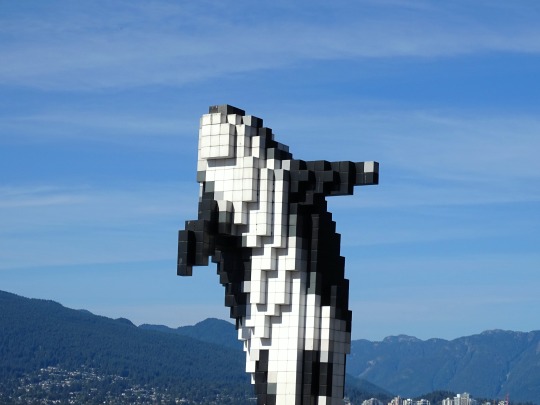
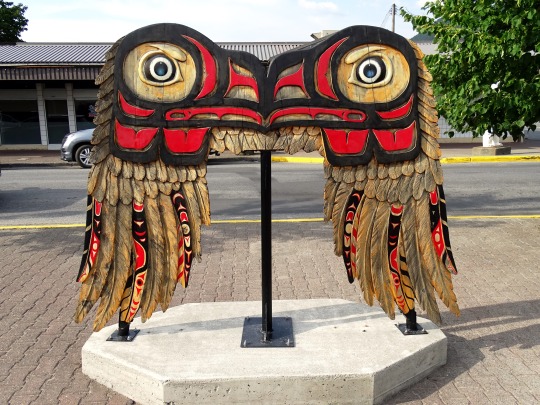
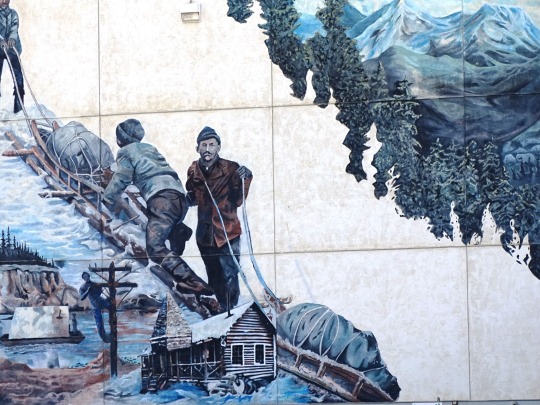

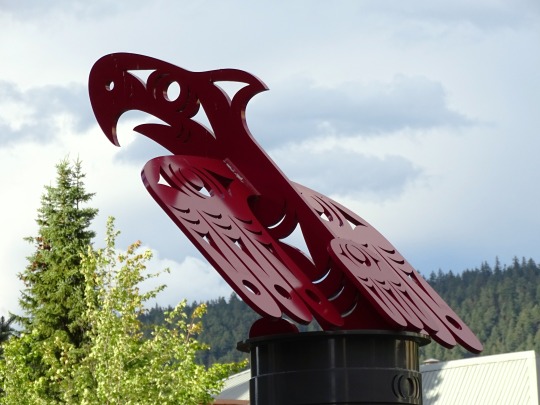
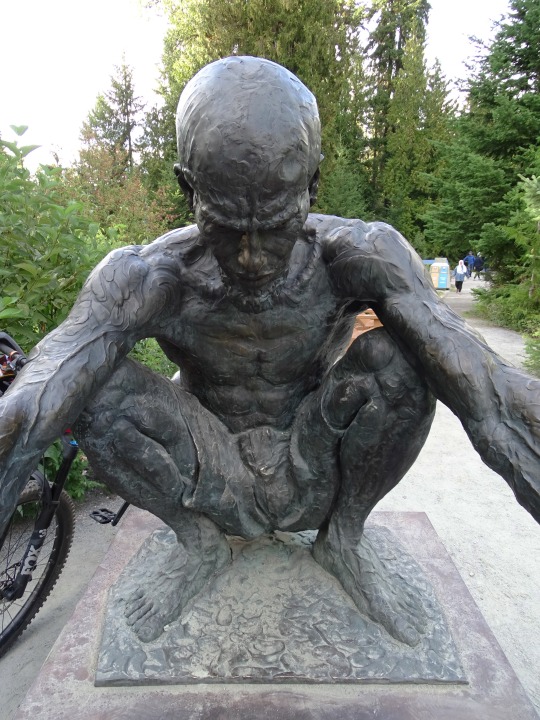

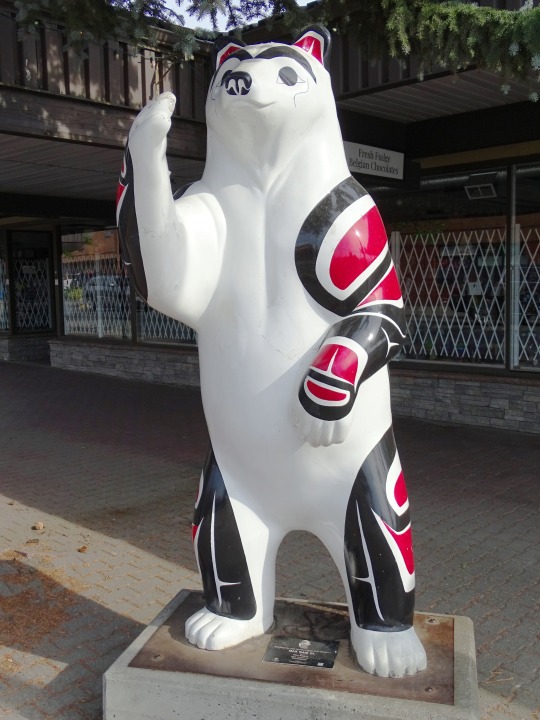




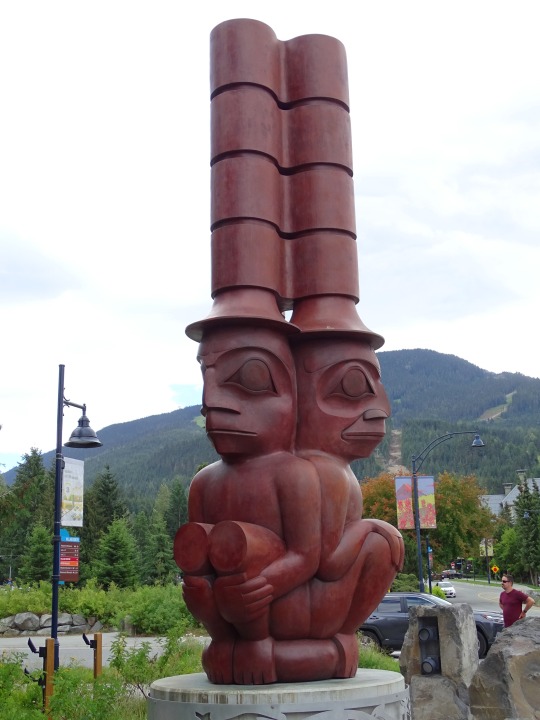




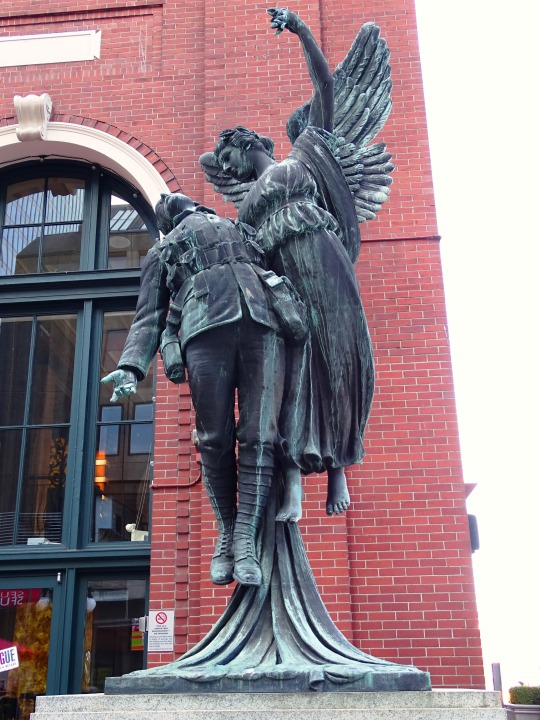



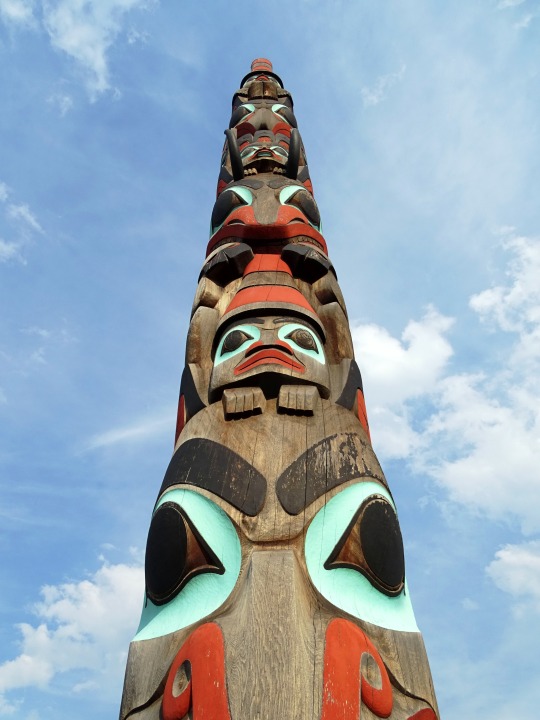
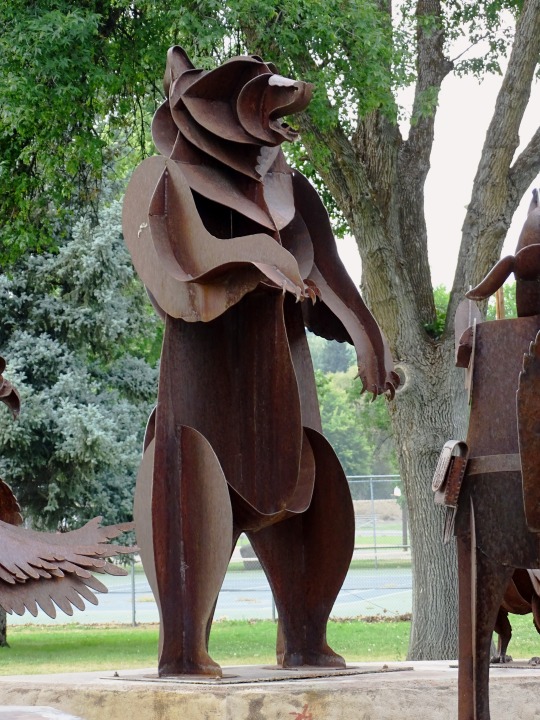

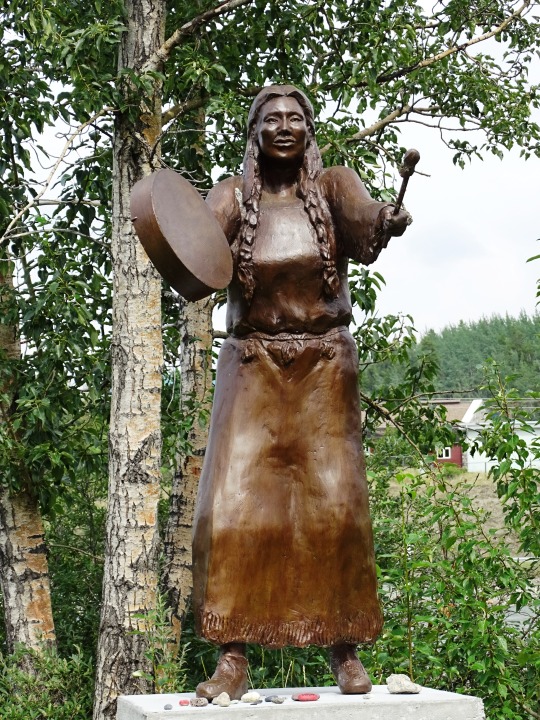
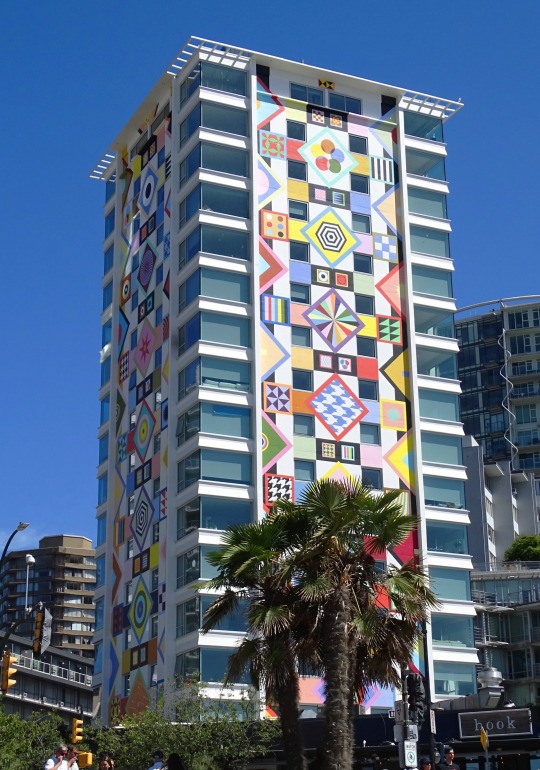

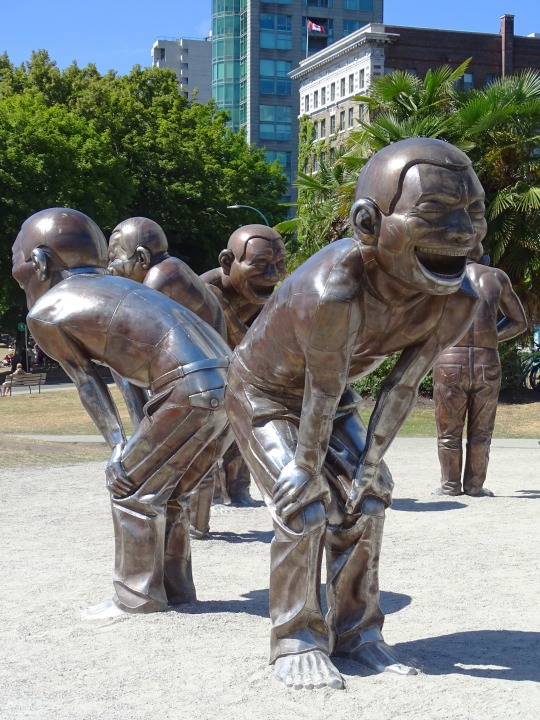

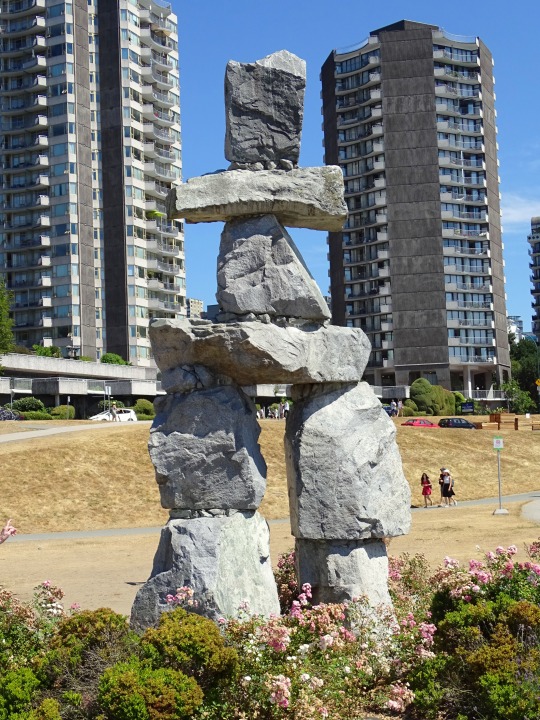
World Art Day
World Art Day is celebrated every year on April 15. All around the world, people have their definitions for what they consider to be art. Different cultures have different tastes and styles. This holiday is used as an opportunity to promote the development of art. It encourages people to take the time to notice the beautiful things around them. With our busy schedules, people don’t always have the time to go to art galleries. A yearly reminder about beauty helps people relax and just enjoy experiencing the world. It shares knowledge, sparks curiosity, and leads to very interesting conversations.
History of World Art Day
World Art Day was declared on April 15 at the General Assembly of the International Association of Art. The first celebration was in 2012. The date was chosen to honor the birthday of the famous Leonardo da Vinci. Da Vinci represents tolerance, world peace, freedom of expression, and multiculturalism. The first world art day was supported by all the International Association of Art (I.A.A.) national committees. There were 150 artists from countries all over the world to ensure inclusion. There were conferences and special museum hours. Outdoor art exhibitions were held to display paintings, prints, sculptures, videos, and more.
Art comes in different forms and categories. Art can be architecture, music, painting, sculpting, dance, or literature. Cinema is also considered art. It is a way for people to express themselves through creativity. True art is simply an expression of emotion. It represents the artist’s view of the world and how they feel about it. Art communicates how similar we can be and also how different. People get their meanings of art when they experience it. Their perceptions are usually based on their personal experiences in life.
World Art Day is a great reminder to help people notice the beauty around them. It reminds people to express themselves fully. We are all full of emotions and should be allowed to show them without fear. The goal is to facilitate the sustainable development of art. With enough support, artists can continue to portray beauty.
World Art Day timeline
1948 The I.A.A. is Born
The International Association of Art is founded in Beirut.
1954 The I.A.A. Becomes Independent
The International Association of Art becomes an independent organization and a UNESCO partner.
2012 World Art Day is Founded
The first World Art Day takes place in Guadalajara on April 15.
2013 World Art Day is Held in South Africa
World Art Day is celebrated by Mbombela municipal art museum in South Africa
World Art Day FAQs
Can anyone create art?
Anything that was created from the imagination as an expression of emotion is considered art. Art can be made by anyone.
Is cooking an art?
Cooking can be considered an art form. A cake, for example, can be considered a beautiful work of art.
Which cities are known for art?
Cities like Rome, Paris, Vienna, and Jerusalem are well-known for their arts and culture. Florence, Mexico City, Venice, London, Barcelona, and Lagos are also known for art.
World Art Day Activities
Create some art
Visit an art museum
Watch a great movie
You can get in touch with your creative side. You can write, draw, paint or take photographs.
There are many art museums and galleries that you can visit. They carry many beautiful art pieces that you can buy or just enjoy looking at.
Movies are considered to be a form of art. Enjoy a classic movie that tells a great story.
5 Fascinating Facts About Art
Art comes from the imagination
Art is a career field
Art can be a performance
Art helps the mind
Art is emotional
Humans use their creative skills and imagination to create something that others can see
Art has professional applications like fashion design, jewelry design, architecture, and wood crafts.
Performance arts include music, dance, and theater.
Art improves hand-eye coordination, strengthens focus, and teaches problem-solving.
Art can help people express complex feelings and emotions.
Why We Love World Art Day
Art is universal
Art is good for the health
Art opens the mind
Art can be understood by people all over the world. It has no language or border barriers.
Art is known to help increase motivation, build self-esteem, and improve holistic health.
Art helps people to see the world from a different point of view. It helps them get a new perspective.
Source
#World Art Day#15 April#WorldArtDay#original photography#tourist attraction#ArtHistoryDay#travel#vacation#cityscape#architecture#landmark#USA#Canada#summer 2023#Two Brothers Totem Pole by Jaalen and Gwaai Edenshaw#Building on the Past Looking to the Future by Ken Anderson#Finding Peace Monument by Halain De Repentigny#Prospector and his dog by Chuck Buchanan#Wings of Hope by Amanda Hugon#A-maze-ing Laughter by Yue Minjun#Inukshuk by Alvin Kanak#Spring by Alan Chung#Digital Orca by Douglas Coupland#The Drop by Inges Idee#No Caulks Allowed by Roger Fox#Pelican on Parade by Stefan Savides#Greetings From Bend by Katie Daisy and Karen Eland#“Spirit Horse” by Smoker Marchand
3 notes
·
View notes
Text
Evolution of Interior Designer in Gujarat: Expert Design Services
Gujarat's interior design has changed significantly over the years, capturing the region's colourful modern influences as well as a rich cultural legacy. Interior Designer in Gujrat have skillfully combined a variety of styles, from modern design trends to traditional Gujarati aesthetics, to create rooms that are attractive to the eyes and satisfying.
Traditional Roots: Gujarat has a long tradition of artistic and skilled workmanship, which is seen in the state's complex woodwork, colourful textiles, and detailed elements of architecture. These traditional components serve as a source of inspiration for Interior Designer in Gujarat, who use bright colours, homemade furnishings, and ethnic patterns to fill homes with a feeling of love and cultural relevance.
Modern Interpretations: Gujarat has seen a rise in modern design senses since the advent of globalisation and urbanisation. Interior Designer in Gujrat are leading the way in adopting contemporary style, combining clean lines, minimalist interior design, and cutting-edge technology to create rooms that are both stylish and functional.
Combination of Cultures: Interior Designer in Gujrat is recognized for its skill. Whether designing a modern flat in Ahmedabad or a historic house in Ahmedabad, Gujarat interior Designer expertly combine various design aspects to capture their customers' unique traits and lifestyles.
Utilising Modern to Develop: Gujarat's approach to design is rooted in past times, yet the state is also a hybrid of modern inspirations and international fashions. Interior designers in Gujarat are - adopting modern design ideas in light of the growing globalization and urbanization of the region. current homes and companies around the state smoothly integrate current technology, minimalist design, and clean lines. Gujarat's interior designers are at the forefront of reinventing modern luxury and refinement, from trendy shops in Surat to sleek urban residences in Ahmedabad.

Tailored Solutions: Gujarat's varied environment, which includes both calm countryside and busy cities, necessitates a personalised approach to interior design. Interior Designer in Gujarat are aware of the value of customising their offerings to each client's unique requirements and preferences to make sure that each project reflects their vision and sense of style.
Collaborative Process: In Gujarat, effective interior design initiatives are based on teamwork and communication. Interior Designer in Gujrat collaborate closely with customers, contractors, and architects to make sure that every step of the design process is expertly planned and carried out, producing places that are better than predicted. Good interior design is a team effort, and Gujarati designers are excellent communicators and team players. To bring ideas to life, they interact closely with workers, contractors, and architects. This collaborative atmosphere encourages invention and creativity, creating environments that are not only aesthetically pleasing but also useful and practical. Gujarat's interior designers guarantee the perfect execution of every project, from idea creation to final installation.
Looking Ahead: Gujarat's interior design industry will likely expand in the next few years as it continues to change and accept new concepts. Interior Designer in Gujrat are ready to take the lead, breaking down limits and changing what it means to live in luxury. The future is bright for Gujarat's interior design sector as it continues to develop and adopt new ideas. Leading the way, breaking down boundaries and revolutionizing luxury living are interior designers. They are prepared to build places that inspire, delight, and last for many generations to come because they are dedicated to quality and creativity.
In conclusion, Gujarat's interior design industry has developed as a result of the area's rich cultural legacy, vibrant energy, and dedication to quality. Gujarat interior Designer are committed to creating environments that inspire, thrill, and last for the next generation, whether they want to explore modernism or uphold tradition.
Get in touch with us now to discover more about our interior designer in Gujarat and how we can revamp your workplace into a productive and inspiring setting. Visit our website for further details: [https://jdesignstudio.in/office-interior-designer/]
#interior design company in ahmedabad#homedesign#interior designer#home interior designers in ahmedabad#construction#interior designer in ahmedabad#interior designer in gujarat.#consultingservices#office interior designers in ahmedabad
2 notes
·
View notes
Text
Building technology that empowers city residents
New Post has been published on https://thedigitalinsider.com/building-technology-that-empowers-city-residents/
Building technology that empowers city residents


Kwesi Afrifa came to MIT from his hometown of Accra, Ghana, in 2020 to pursue an interdisciplinary major in urban planning and computer science. Growing up amid the many moving parts of a large, densely populated city, he had often observed aspects of urban life that could be made more efficient. He decided to apply his interest in computing and coding to address these problems by creating software tools for city planners.
Now a senior, Afrifa works at the City Form Lab led by Andres Sevstuk, collaborating on an open-source, Python-based tool that allows researchers and policymakers to analyze pedestrians’ behaviors. The package, which launches next month, will make it more feasible for researchers and city planners to investigate how changes to a city’s structural characteristics impact walkability and the pedestrian experience.
During his first two years at MIT, Afrifa worked in the Civic Data Design Lab led by Associate Professor Sarah Williams, where he helped build sensing tools and created an online portal for people living in Kibera, Nairobi, to access the internet and participate in survey research.
After graduation, he will go on to work as a software engineer at a startup in New York. After several years, he hopes to start his own company, building urban data tools for integration into mapping and location-based software applications.
“I see it as my duty to make city systems more efficient, deepen the connection between residents and their communities, and make existing in them better for everyone, including groups which have often been marginalized,” he says.
“Cities are special places”
Afrifa believes that in urban settings, technology has a unique power to both accelerate development and empower citizens.
He witnessed such unifying power in high school, when he created the website ghanabills.com, which aggregated bills of parliament in Ghana, providing easy access to this information as well as a place for people to engage in discussion on the bills. He describes the effect of this technology as a “democratizing force.”
Afrifa also explored the connection between cities and community as an executive member of Code for Good, a program that connects MIT students interested in software with nonprofits throughout the Boston area. He served as a mentor for students and worked on finding nonprofits to match them up with.
Language and visibility
Sharing African languages and cultures is also important to Afrifa. In his first two years at MIT, he and other African students across the country started the Mandla app, which he describes as a Duolingo for African languages. It had gamified lessons, voice translations, and other interactive features for learning. “We wanted to solve the problem of language revitalization and bring African languages to the broader diaspora,” he says. At its peak a year ago, the app had 50,000 daily active users.
Although the Mandla App was discontinued due to lack of funding, Afrifa has found other ways to promote African culture at MIT. He is currently collaborating with architecture graduate students TJ Bayowa and Courage Kpodo on a “A Tale of Two Coasts,” an upcoming short film and multimedia installation that delves into the intricate connections between perceptions of African art and identity spanning two coasts of the Atlantic Ocean. This ongoing collaboration, which Afrifa says is still taking shape, is something he hopes to expand beyond MIT.
Discovering arts
As a child, Afrifa enjoyed writing poetry. Growing up with parents who loved literature, Afrifa was encouraged to become involved with the theater and art scene of Accra. He didn’t expect to continue this interest at MIT, but then he discovered the Black Theater Guild (BTG).
The theater group had been active at MIT from the 1990s to around 2005. It was revived by Afrifa in his sophomore year when Professor Jay Scheib, head of Music and Theater Arts at MIT, encouraged him to write, direct, and produce more of his work after his final project for 21M.710 (Script Analysis), a dramaturgy class taught by Scheib.
Since then, the BTG has held two productions in the past two years: “Nkrumah’s Last Day,” in spring 2022, and “Shooting the Sheriff,” in spring 2023, both of which were written and directed by Afrifa. “It’s been very rewarding to conceptualize ideas, write stories and have this amazing community of people come together and produce it,” he says.
When asked if he will continue to pursue theater post-grad, Afrifa says: “That’s 100 percent the goal.”
#000#2022#2023#Africa#amazing#Analysis#app#applications#architecture#Art#Arts#Atlantic ocean#Building#cities#code#Code for Good#coding#Collaboration#Community#computer#Computer Science#Computer science and technology#computing#data#Design#development#easy#Electrical Engineering&Computer Science (eecs)#Engineer#Features
5 notes
·
View notes